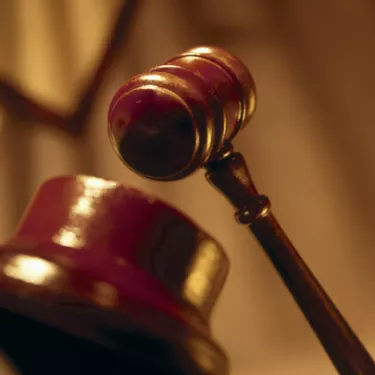
One method of collecting a debt from an individual who owes you money is by forcing payment through a judgment lien. A judgment lien attaches to real estate the debtor owns, encumbering the property's title. Should the debtor attempt to sell the property, he must first pay off any outstanding liens the title carries — including yours. You do not need an attorney to file a lien against another consumer. You can file and argue your court case on your own. You must obtain a judgment in court before you can file a lien against another individual's property.
Step 1
File a lawsuit against the debtor in the appropriate court. The appropriate court for hearing your case will vary depending on how much the debtor owes. Small claims court limits vary by state.
Video of the Day
Step 2
Fill out a formal summons for the debtor. Your summons must note the names of both the plaintiff — you — and the defendant — the debtor. It must contain the date and time of the scheduled court hearing, and it must inform the defendant that, should he fail to appear at the hearing, the court will award a default judgment against him in your favor.
Step 3
Make three copies of the summons. Take the copies to the court clerk, who will review the summons to ensure that it contains all of the required information before signing it and adding the court's official seal.
Step 4
File one copy of the summons with the court. Serve another copy on the defendant. State rules vary regarding how a plaintiff must serve a court summons. Some require personal service, while others permit you to serve the defendant via mail. Keep the remaining copy of the summons for your records.
Step 5
Compile documentation proving your case against the debtor. This may include such paperwork as a signed contract agreeing to pay, evidence of previous payments and evidence of letters you previously sent to the debtor in an effort to collect the debt outside of court.
Step 6
Arrive in court at the scheduled day and time. Present your evidence to the judge. Answer any questions the judge asks honestly and to the best of your ability.
Step 7
Ask for a certified copy of your judgment from the court clerk if the judge decides the lawsuit in your favor.
Step 8
Record the certified copy of your judgment against the debtor with the Land Records office in the county where the debtor owns property. This creates a judgment lien against any real estate the debtor owns that is located in that county.
Tip
If the debtor owns property in more than one county, you may record your judgment in more than one county to create a lien on several pieces of property simultaneously.
You can use a real estate lien to foreclose on the debtor’s property. If you initiate a foreclosure, however, you must pay off any liens other creditors recorded against the property before your lien was created.
Warning
The length of time a judgment remains in effect varies by state. Once your judgment expires, your lien against the debtor’s property also expires.
Things You'll Need
Formal summons
Supporting documentation
Certified copy of judgment
Video of the Day